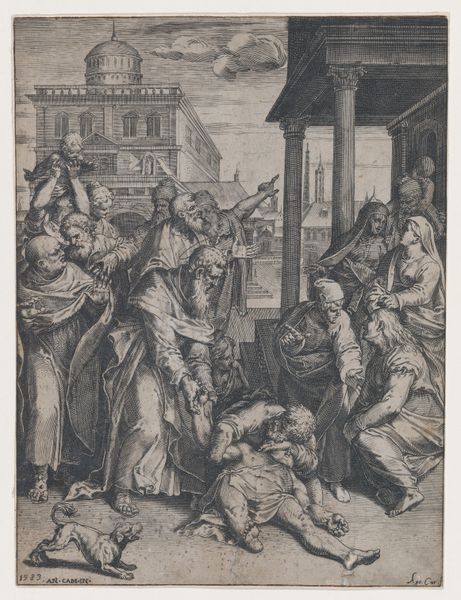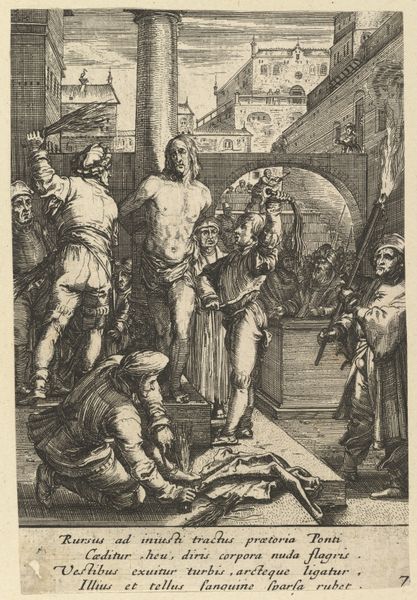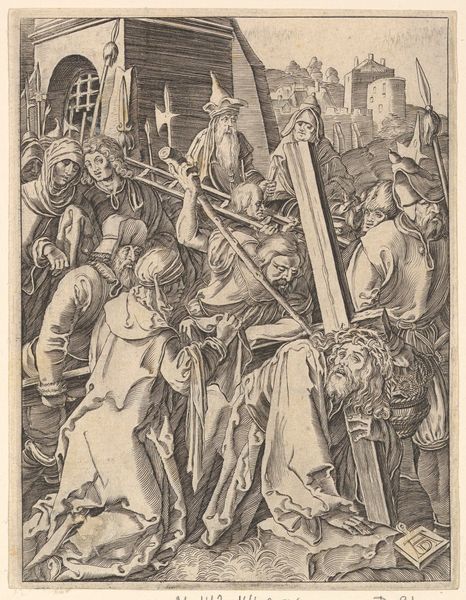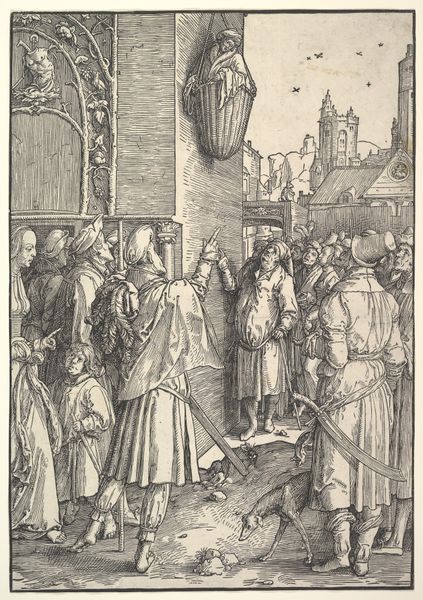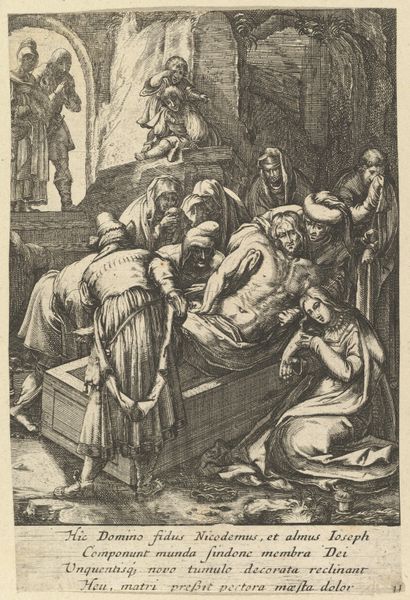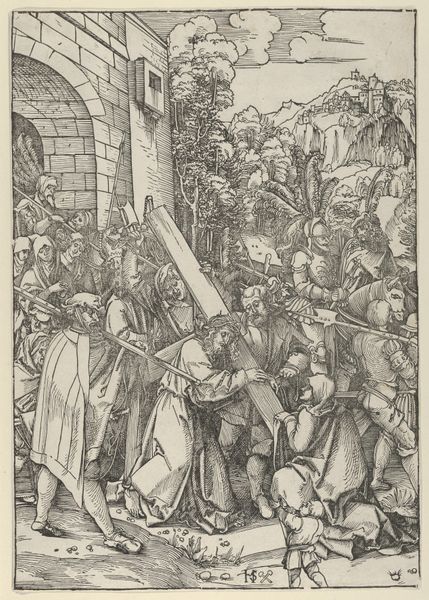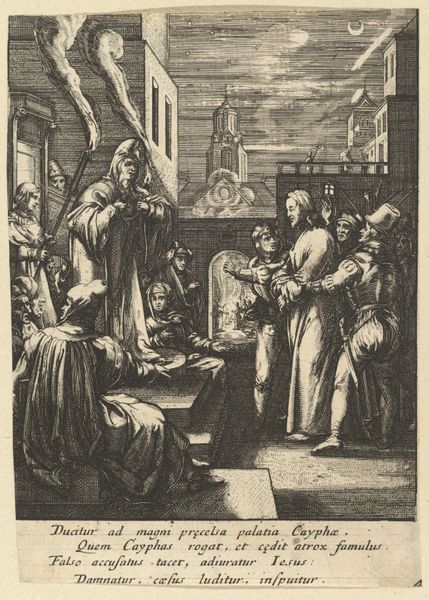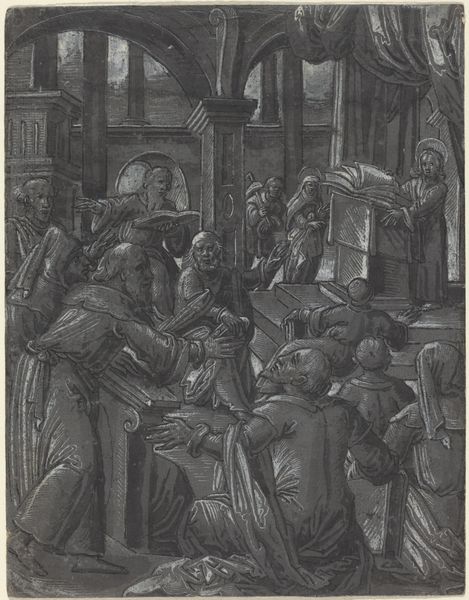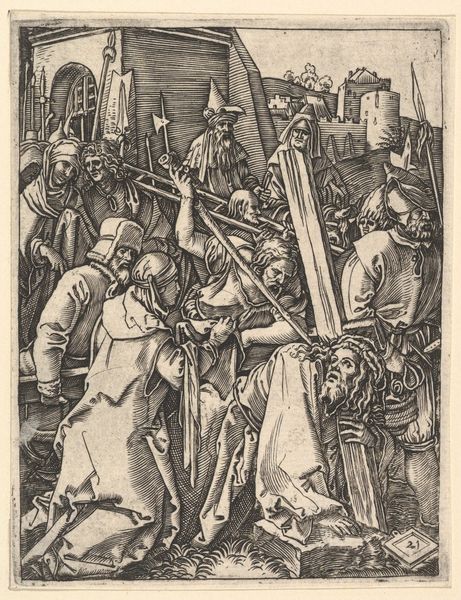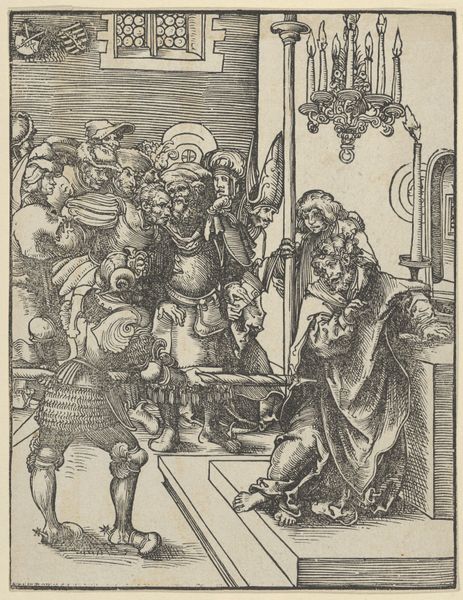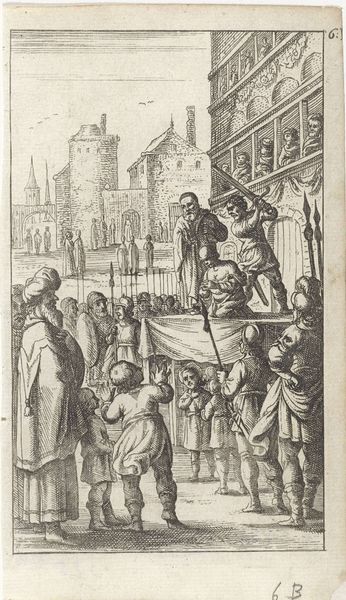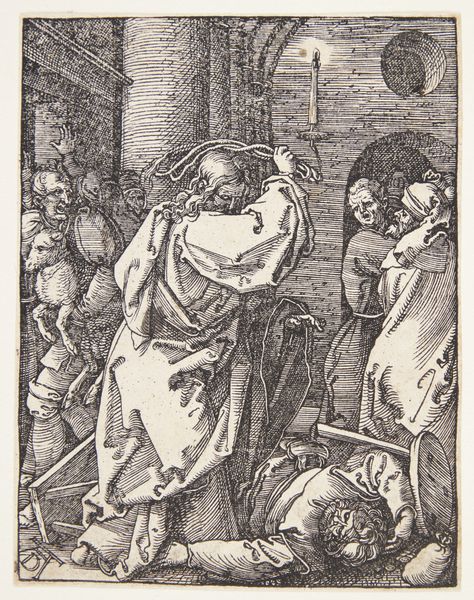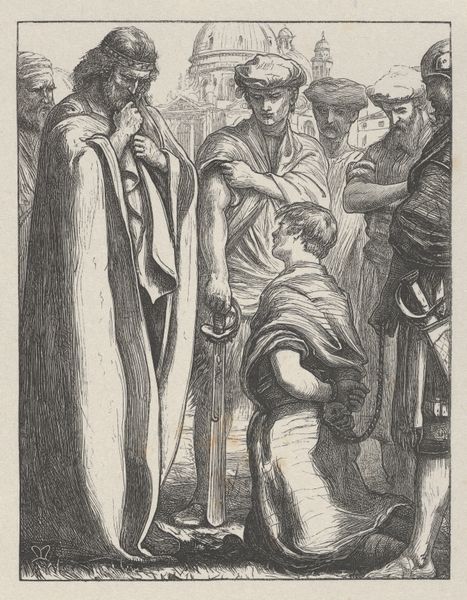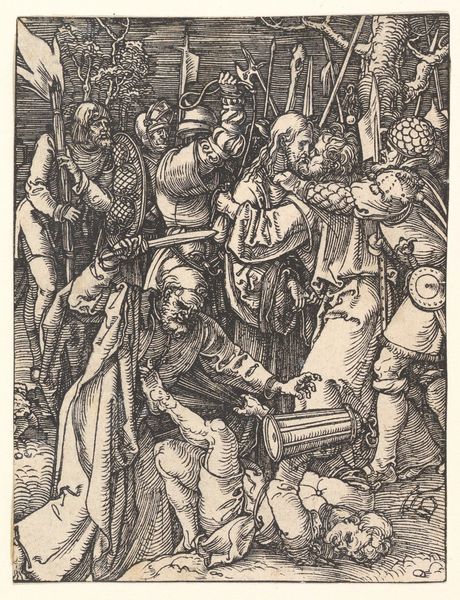
Dimensions: Sheet: 5 13/16 x 3 7/8 in. (14.8 x 9.9 cm)
Copyright: Public Domain
Editor: So, this is "Ecce Homo, from 'The Passion of Christ'," an etching and engraving print by Nicolas Cochin, dating somewhere between 1610 and 1700. There's so much happening; it feels really crowded and chaotic. What compositional elements stand out to you? Curator: I would note that the success of the composition lies in the expert deployment of line. Consider the ways in which Cochin is using hatching and cross-hatching in order to give the impression of light and shadow within a monochrome framework. Notice, too, how the eye is directed to Christ, then outwards towards other structural elements. It has dynamism without sacrificing a balanced formal arrangement. Do you find it effective in conveying the narrative? Editor: I do see that the density of the lines really directs my gaze, especially towards the figures. Is there a reason Cochin might have chosen this specific level of detail, besides just representing the scene accurately? Curator: Consider the interplay between clarity and ambiguity achieved through the varying densities of the etched lines. The highly defined figures of Christ and the Roman soldiers contrast with the less distinct forms of the crowd. Is it possible that Cochin deliberately draws our attention to these contrasts as a way of drawing out the underlying dramatic and ideological tensions? Editor: That makes a lot of sense. The strategic use of line really emphasizes certain figures and almost blurs out the rest. Thanks for the formal analysis. It changed how I see this print. Curator: Indeed, the interplay of these artistic devices offers us insight into Cochin's technical skills and the symbolic intentions embedded within the print.
Comments
No comments
Be the first to comment and join the conversation on the ultimate creative platform.
